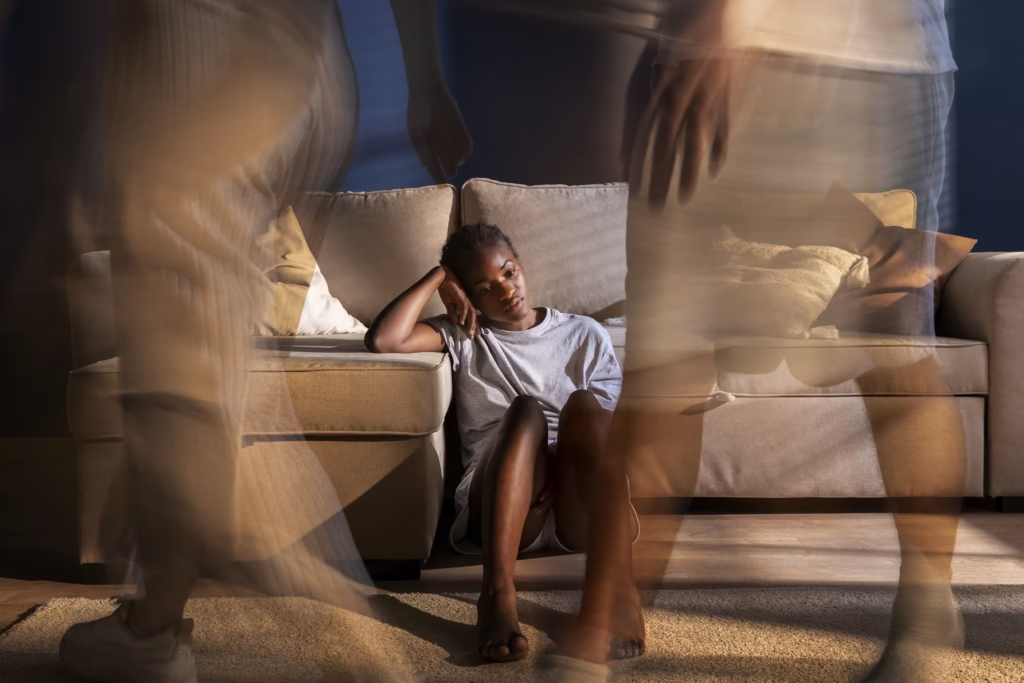When we hold a panorama of panic attack, we picture a person running around hyperventilating and sweating or even collapsing to show his distress flamboyantly. However, not every panic attack would look like this. Others are more subdued, covert and more difficult to detect. This is what is termed as a silent panic attack. They are no less real or traumatic than their more noticeable counterparts and yet remain unnoticed even to the affected individual. There is a need to understand silent panic attacks, particularly by someone living with panic disorder or involuntary anxiety instances. The blog deals with the symptoms, causes and treatment of panic attacks to enable you or a close one to identify such an attack, and deal with it.
What Is a Silent Panic Attack?
The silent panic attack is basically a panic attack that manifests itself silently without the typical physical outward signs. As opposed to conventional panic attacks, which can carry evident symptoms like difficulty. When breathing or shaking, panic attacks are conducted with an internal pattern. The true symptoms are severe and non-observable to other people.
Such attacks may occur without any warning. Most people will see a totally relaxed and confident exterior, regardless of how afraid or upset you are ·on the inside.
Top Common Symptoms of a Panic Attack
The first thing is recognizing the symptoms as a way of knowing whether it is silent panic attack or not. The most common signs are as follows:
Racing Thought: You can feel that your mind going crazy with fears, worst scenarios, compulsive thoughts.
Detachment or Derealisation: You may feel out of touch with your environment, as if you are on the outside looking in to your life.
Heart Palpitations: Even when you are publicly composed, the heart may beat or flutter very fast.
Dry and Swallowing Problems: Your mouth may be dry, and you may find it hard to swallow.
Nausea or stomach upset: Most people complain about their digestive problems, which are usually not associated with any health condition.
Lightheadedness or Dizziness: Dizziness or feeling faint without any loss of balance.
These symptoms take place in the body without causing any outburst, and that is why panic attacks are usually misinterpreted as physical disorders, including heart diseases or stomach disorders, and thus treated with a delay.
Causes of Silent Panic Attacks
The triggers of panic attacks tend to be similar to other panic attacks that are more evident. Major precipitants and predisposing things can be:
- Chronic Stress: Prolonged stressing conditions may fatigue the nervous system to the point where it produces panic reactions.
- Genetic Predisposition: There is more risk when there is a history of experiencing an anxiety or panic disorder in the family.
- Trauma and PTSD: An individual who has had prior experience of emotional trauma can have panic attacks regardless of the occasional identification of the cause.
- Caffeine or Substance Use: Reckless use of caffeine or recreational medicines, or some medications, can aggravate or provoke symptoms.
- Accompanying Mental Conditions: Panic attack is likely to co-exist with generalised anxiety disorder or depression as well as other conditions.
- Repressed feelings: Unrecognised emotionally painful feelings or psychological distress can be manifested by panic attacks.
Therapeutic Interventions Panic Attacks
Maximal sensations of panic attacks can affect the quality of life, being invisible and silent. Luckily, there are multiple treatments that can be used:
Cognitive Behavioral Therapy (CBT)
The panic disorder and panic attacks have proved very effective when taken by using the CBT as one of the therapies. It assists people to see and criticise distorted ways of thinking and find ways of coping.
Mindfulness, Relaxation Techniques
The acute symptoms may addressed through breathing exercises and progressive muscle relaxation. And mindfulness to give you reconnection with the here and now.
Medication Options
Medicines can be prescribed in chronic situations or in cases where a person is diagnosed with panic disorder. They are two popular choices:
Xanax (Alprazolam): A rapid virus (benzodiazepine), which is able to calm the panic attack within a few minutes. Nonetheless, because it possesses dependence risks, it is often prescribed in short-term or as needed administration.
Klonopin (Clonazepam): Clonazepam is another benzodiazepine but it has a longer half-life than Xanax and it can be used in the long-term management of some people. It is usually applied together with therapy in order to control the recurrent symptoms.
Final Thoughts
At times silent panic episodes do not have traces, as they are untraceable, but their impact emotionally and physically is very strong. It helps to know the symptoms and find the potential causes. Examine the options of effective treatment, such as professional therapies or medications such as Xanax or Klonopin, to move forward and get healed. Panic disorder, ownership enslavement, or being a victim of the mysterious attacks of intense disturbance inside their bodies it is important to understand that there is help, and it can be overcome. People can visit sleepingpillls to purchase the listed medication.+


